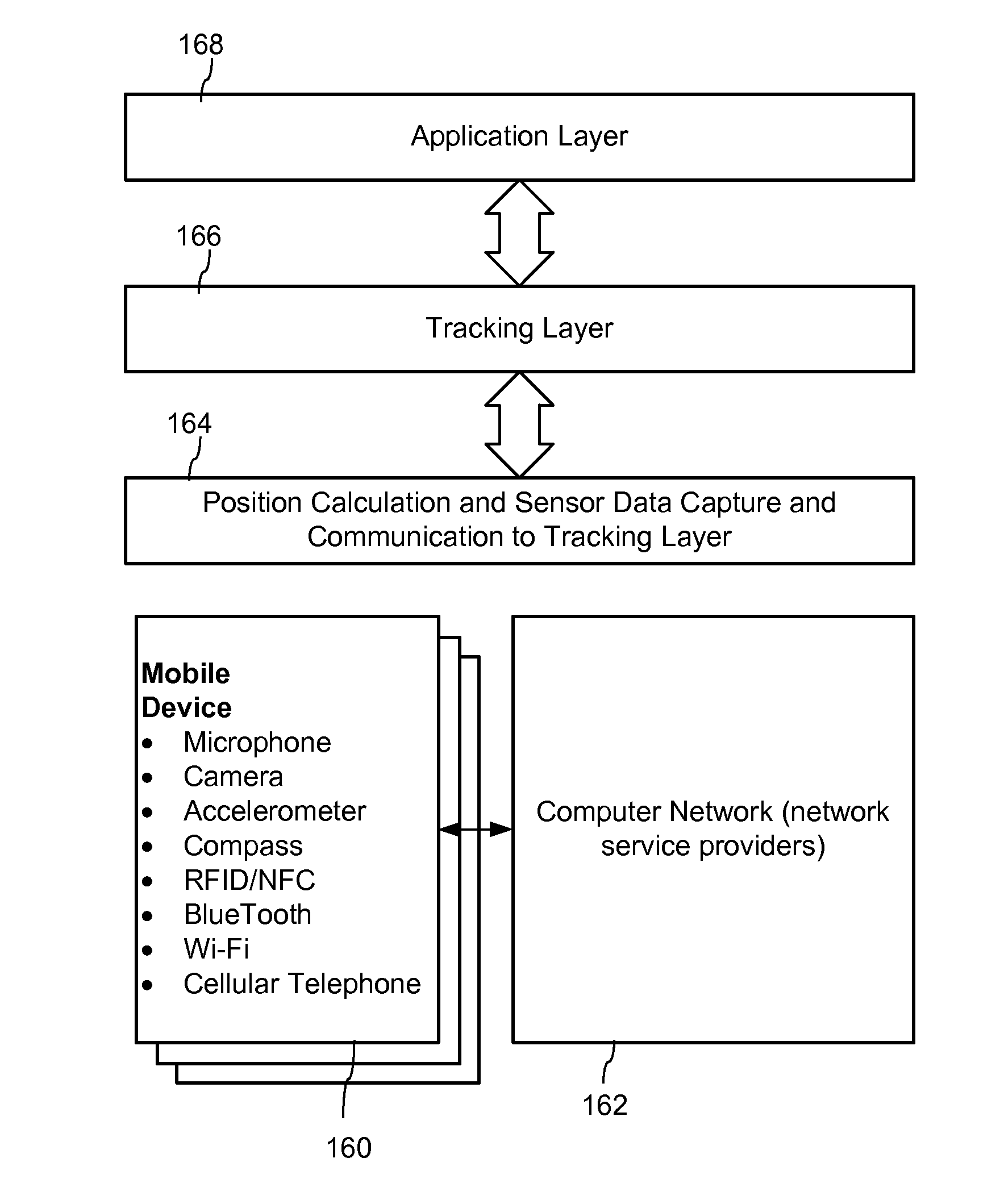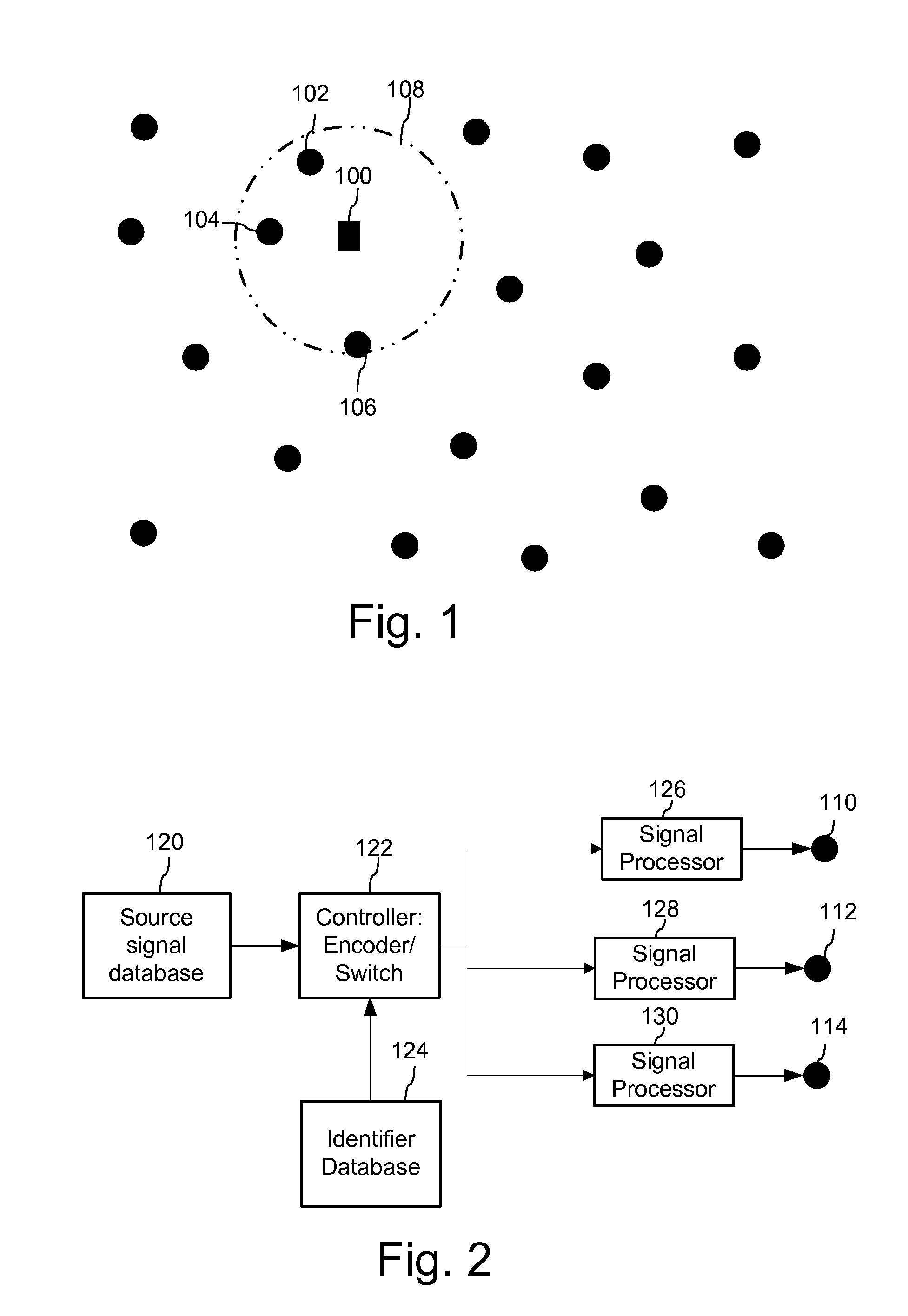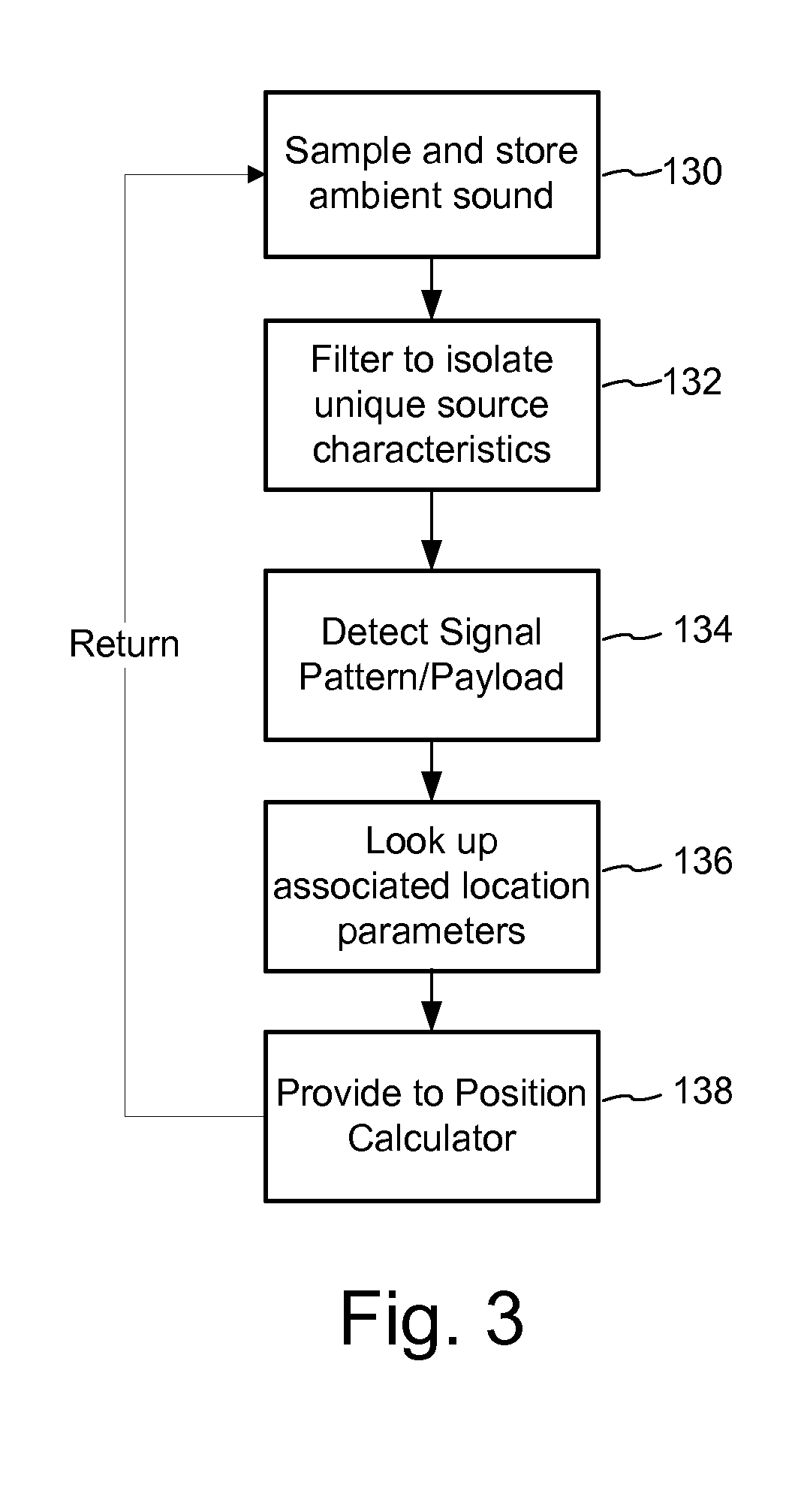Mobile Device Indoor Navigation
a mobile device and indoor navigation technology, applied in the field of positioning systems, can solve the problems of inability to reliably integrate complex components, inability to meet the needs of users, so as to enhance the robustness and reliability, reduce the impact of signal interference on signal degradation, and increase the embedded signal to noise ratio
- Summary
- Abstract
- Description
- Claims
- Application Information
AI Technical Summary
Benefits of technology
Problems solved by technology
Method used
Image
Examples
Embodiment Construction
[0054]Sensor and Source Configurations
[0055]Before getting to the details of a particular localization approach, we start with a discussion of sensor and source configurations and an overview of location information that can be derived from each. In the case of audio localization, the sensors are microphones and the sources are audio transmitters (e.g., loudspeakers). Each can be present in many different configurations, and we review the main categories here. We are particularly interested in applications where the sensor is a common component of a consumer device that is popular among consumers, such as a mobile phone or tablet computer. As such, our examples of configurations use these devices. Later, we provide particular examples of the methods applicable to each of the configurations.
[0056]Configurations can be organized according to the three following categories: 1) the number of sources, 2) the number of microphones on the mobile device; and 3) the number of mobile devices ...
PUM
 Login to View More
Login to View More Abstract
Description
Claims
Application Information
 Login to View More
Login to View More - R&D
- Intellectual Property
- Life Sciences
- Materials
- Tech Scout
- Unparalleled Data Quality
- Higher Quality Content
- 60% Fewer Hallucinations
Browse by: Latest US Patents, China's latest patents, Technical Efficacy Thesaurus, Application Domain, Technology Topic, Popular Technical Reports.
© 2025 PatSnap. All rights reserved.Legal|Privacy policy|Modern Slavery Act Transparency Statement|Sitemap|About US| Contact US: help@patsnap.com



